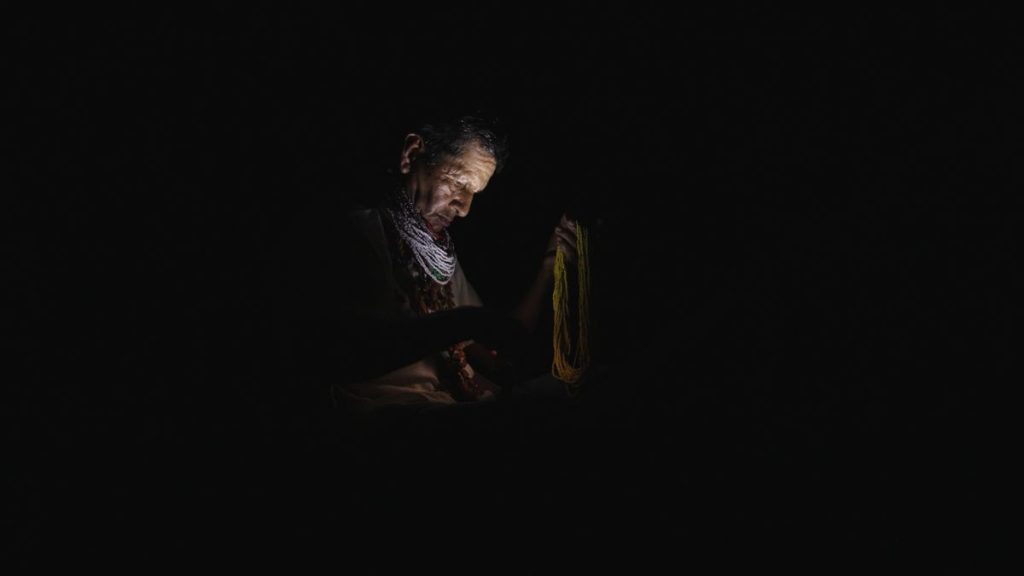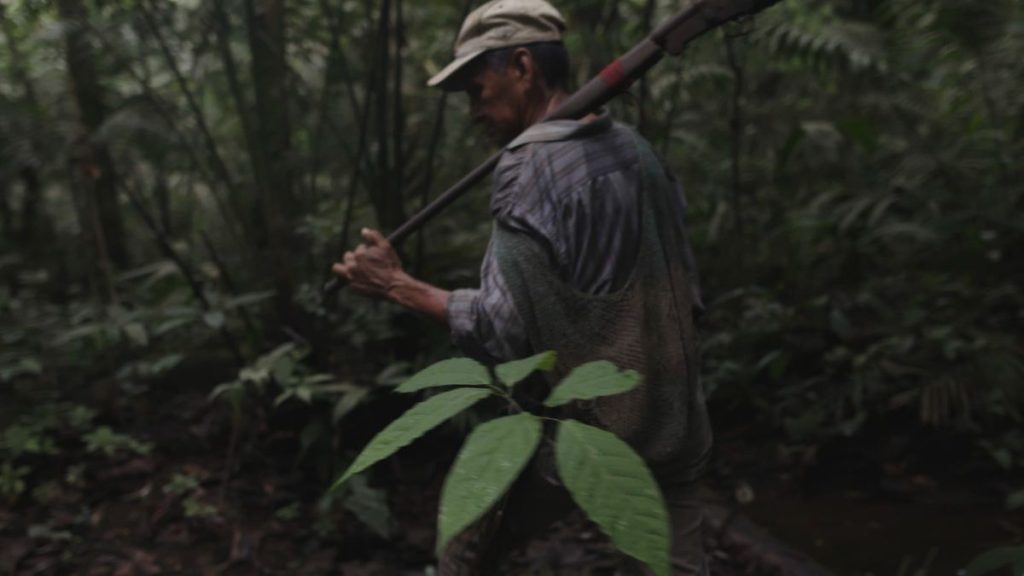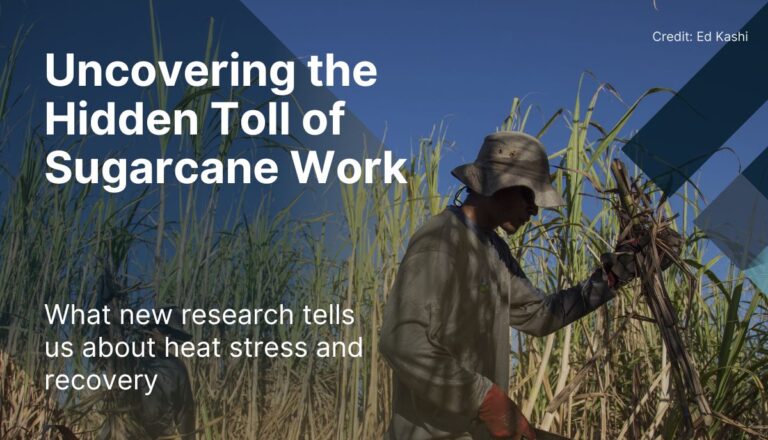Documentary filmmaker and La Isla Network partner Tom Laffay has wrapped up filming for his latest documentary Tigre Eléctrico: A Story of Resistance and Redemption in the Amazon and will begin post-production in Bogotá, Colombia in June.
Documentary filmmaker and La Isla Network partner Tom Laffay has wrapped up filming for his latest documentary Tigre Eléctrico: A Story of Resistance and Redemption in the Amazon and will begin post-production in Bogotá, Colombia in June.
Tigre Eléctrico follows the Siona — an indigenous people located throughout the Colombian Amazon — and the legal, territorial and spiritual fight they are undertaking for their ancestral lands. Filming took place over three years and consisted of direct involvement with the Siona, living with them and participating in their activities.
The Siona’s territory and identity are fragmented as a result of two centuries of disease, colonization, forced conversion and conflict, said Laffay. “The Siona are classified by the Colombian government as being at risk of physical and cultural extinction due to armed conflict,” he said.
Siona leader Nancy Correa Payaguaje has joined the film as co-writer and producer alongside Laffay. Jaap van’t Kruis and Liliana Jauregui are the film’s editor and producer, respectively. Leading the team’s impact campaign is Daniel Bustos, long-time collaborator of Laffay’s and recent recipient of a Fullbright for work in the Amazon.










Laffay’s interest in film, photography and storytelling run deep. “I have always been an artist of sorts,” he said. Painting murals on walls in Cleveland, he realized the impact that a work of art could have on the public.
After graduating from college with degrees in Political Science, Latin American Studies and Spanish, Laffay moved to Nicaragua in 2011. There, he began working as a freelance journalist. At the same time, La Isla Network co-founder and CEO Jason Glaser was forming a team to address the epidemic of chronic kidney disease of non-traditional cause (CKDnt) among a community of sugarcane cutters in Western Nicaragua. Laffay and Glaser began to work together creating the foundation for the work of La Isla Network today.
“I learned from an early age working with Jason how to have an impact with a documentary film,” said Laffay. “Sometimes your audience only needs to be decision makers in a boardroom at a sugarcane mill and not a massive news audience. If you can move the right people to action, you can make a real difference. In our case, it was on the health and lives of these farmworkers.” After their initial collaboration, Jason and Laffay continued to work together, and Laffay joined the La Isla Team as the Director of Communications from 2014-2016.
In 2016, Laffay moved to Bogotá, Colombia after producing a documentary series about Colombian Human Rights lawyers under threat. He reached Colombia weeks before the peace talks to end the 52 year conflict between the FARC guerillas and the Colombian government were taking place.
Though the peace talks were transpiring, the violence did not end. In the countryside, hundreds of social leaders were being murdered as new cartels and armed groups filled in the power vacuum left behind by the FARC. Laffay documented the rise of 13 new armed groups that arose in the department of Cauca alone. “They were murdering with abandon anyone who stood in their way,”
Laffay worked on that story through 2019, which culminated in the film Nos están matando (They’re killing us).
With an open source release, the film went viral across the Colombian diaspora and led to over 50 screenings being organized in over 30 countries by students, activists and academics to highlight the underreported and growing crisis as the dark side of the Peace Accords. Laffay and his partners Emily Wright and Daniel Bustos screened the film to US Congress, creating a platform for social leader Hector Marin Carabali, one of the film’s protagonists.
Five years after that film’s release, Laffay is now entering post production on Tigre Eléctrico, a film about the indigenous Siona people and their fight for their ancestral lands.
On the edge of the Colombian Amazon, the indigenous Siona People live between two sacred plants: ayahuasca, which guides them spiritually in the defense of their territory and coca which has brought war.
The lessons that Laffay learned from his involvement with La Isla Network informed his time living, collaborating with and filming the Siona people. “This story is important now because the Amazon is at a tipping point. And if the Amazon is to be protected, the indigenous peoples, like the Siona with their ancestral knowledge of managing and cohabitating with the forest, need to be at the forefront of defending the Amazon. Indigeous Peoples of the Amazon have endured and continue to endure genocide committed against them by state governments and colonist loggers, miners and narco trafficking organizations. It’s time that world leaders respect Indigenous People as the equals and the wise stewards of these critical ecosystems that they are. This film aims to create a very raw portrait of what it takes for a modern Indigenous community to engage in this struggle in the territorial, legal and spiritual realms.”
Laffay’s work as a filmmaker needs to be immersive, he said. “It was a great privilege to have been accepted by the sugarcane cutting communities of western Nicaragua, and be let into their lives in order to document some of the most difficult, or outraging, moments of people’s lives,” he said.
His work with the Siona draws on the years of experience as a filmmaker with a bend towards justice for the communities whose stories he is telling. “There is a social pact that you’re making with people that’s not transactional. It’s based on this idea that people want to bring attention to their situation because they think that the world should know their story. And we should. It is the privilege and the responsibility of communicators and documentarians to faithfully represent people in the most real sense that you can.”
To learn more about Tigre Eléctrico and to watch the teaser head over to Laffay’s website.

If you have any further questions or comments, please reach out to us using the contact form.







